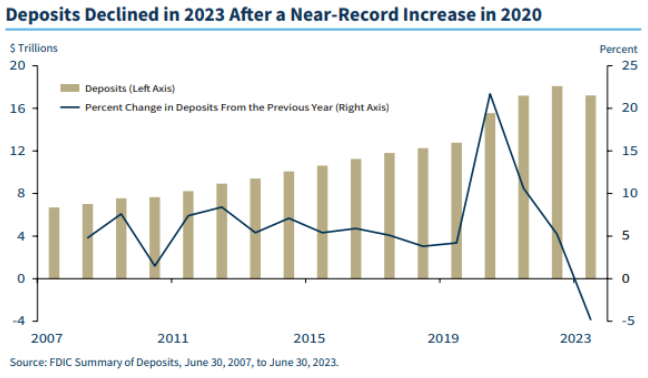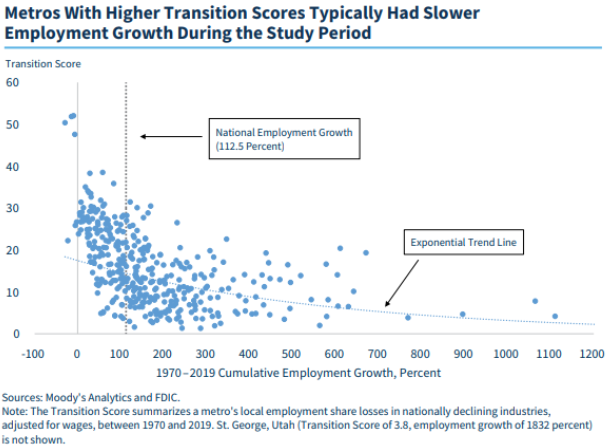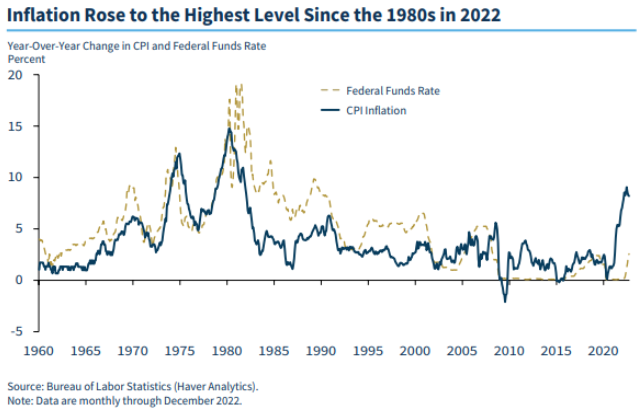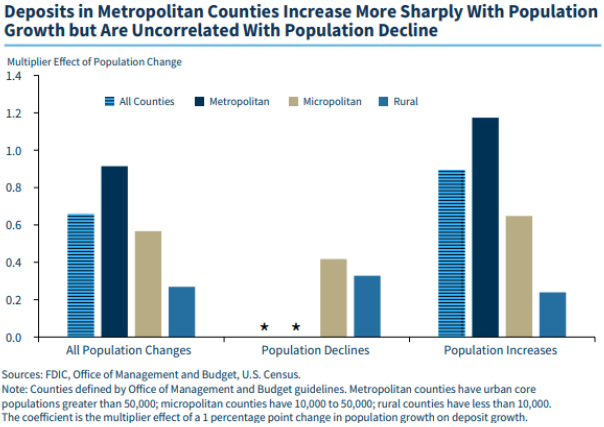Banking Issues in Focus provides an in-depth analysis of topical banking issues. These articles range from timely analysis of economic and banking trends at the national and regional level that may affect the risk exposure of FDIC-insured institutions to research on issues affecting the banking system and the development of regulatory policy.
In the past, these articles were featured in FDIC Quarterly Volumes.
Recent Articles
2023 Summary of Deposits Highlights
By Michael Hoffman, Camille Keith, Joycelyn Lu and LaShawn Reed-Butler (2024)
The 2023 Summary of Deposits article evaluates deposit and office trends by bank asset size group, community and noncommunity bank designation, and county type. Responses from the 2023 Summary of Deposits survey showed deposit declines of 4.8 percent between June 2022 and June 2023, the first annual decline in nearly 30 years. Deposit declines were greatest at large banks, while community banks reported deposit growth. The survey also showed the office closure rate improved from a year earlier, and community banks opened offices in metropolitan, micropolitan, and rural counties.

U.S. Industrial Transition and Its Effect on Metro Areas and Community Banks
By John M. Anderlik, J. Will Greene, Kathy Kalser, Eric Robbins, Scott Schweser and Brian L. Webb (2024)
As alternative forms of energy and lower carbon technologies emerge, the economies of areas with concentrations in industries exposed to these changes may undergo transition. The FDIC study “U.S. Industrial Transition and Its Effect on Metro Areas and Community Banks (PDF)” explores industrial transitions in the United States between 1970 and 2019. The economies and demographics of many Metropolitan Statistical Areas (metros) changed significantly during the five-decade span. The national economy shifted away from the manufacturing sector, and industries such as steel and textiles were hollowed out by the forces of automation and globalization. In the study, the authors create a novel metric called a Transition Score to measure industrial transition across metros, use this metric to determine which metro areas were most affected by industrial transition, and compare the economic and banking performance of affected areas to areas with lower levels of transition.

Implications of High Inflation for Banking Outcomes and Deposit Flows: Observations from 2021 to 2022 and the 1970s
By Kathryn Fritzdixon (2023)
Persistently high inflation can affect banks in various ways as monetary policy tightening and macroeconomic changes occur. This article compares lending and bank performance during the stagflation periods of the 1970s and recent high inflation with a focus on the effects on deposits. Robust deposit growth in the 1970s suggests that banks were actively seeking deposits, while in 2021 to 2022, banks generally were flush with deposits as a result of varying pandemic support programs. The differences between the two periods illustrate the importance of considering broader macroeconomic conditions when analyzing the effects of inflation on banks.

2022 Summary of Deposits Highlights
By Angela Hinton, Michael Hoffman, Caitlyn Kasper and Joycelyn Lu (2023)
The 2022 Summary of Deposits article evaluates deposit and office trends by bank asset size group, community and noncommunity bank designation, and county type. A special feature analyzes office openings and closings in locations that experienced high in- and out-migration during the COVID-19 pandemic. Responses from the 2022 Summary of Deposits survey reflected a moderation in deposit growth following extraordinary growth in 2020 and 2021. The moderation in the annual deposit growth rate came with a slight deceleration in bank office closures. More than two years since the onset of the COVID-19 pandemic, migration patterns may be influencing office locations.

The Effects of Population Change on Community Bank Deposits and Loans
By Jared Rothman (2023)
For decades, U.S. rural county population generally declined while metropolitan county population grew robustly. The 2020 pandemic disrupted these trends, with potentially significant implications for community banks. Based on pre-pandemic data, community bank deposit growth correlated strongly with population growth. However, deposit growth kept pace with population in micropolitan counties but lagged in micropolitan and rural counties. The response of community bank loan portfolios to population growth also displayed different patterns among county types. Commercial real estate loan shares rose and residential loan shares fell, but at different rates. Commercial and industrial loan shares rose only in micropolitan counties. Agricultural loan shares rose only in metropolitan counties. If new population patterns persist, these relationships may materially affect the business models of community banks.

